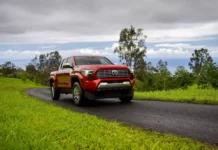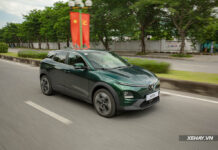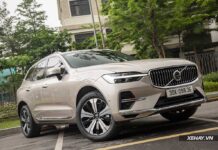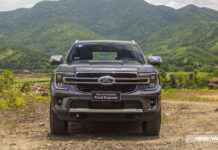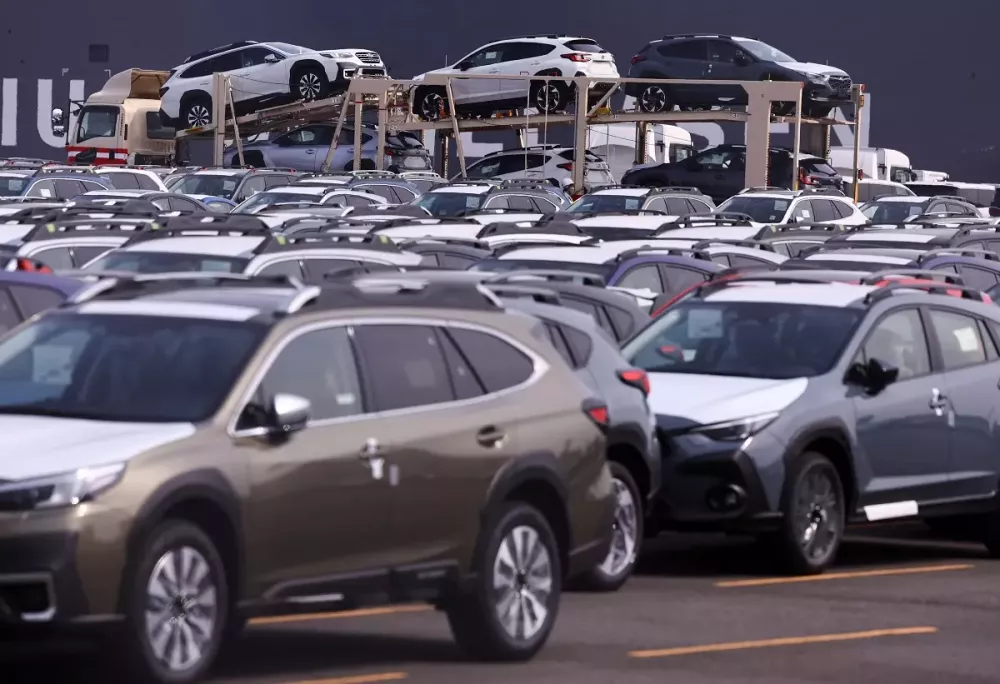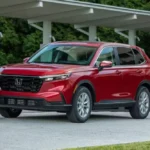According to a report by Nikkei Asia, the recent tariffs imposed by President Donald Trump are expected to significantly impact the automotive industries in Japan and South Korea. The implementation of a 25% tariff on imported vehicles from April 3, 2025, is anticipated to severely affect both the automotive sector and the overall economy of Japan.
As per a report by UBS Securities, the new tariffs could cost the seven largest Japanese automakers more than 3.5 trillion yen ($24.15 billion) in lost revenue. Toyota alone may lose up to 1.8 trillion yen ($12.42 billion) in revenue.
“Japanese automakers may be forced to take some actions, such as moving production to the US,” said Kohei Takahashi, an analyst at UBS Securities.
The Japan Automobile Manufacturers Association (JAMA) stated that the US accounts for over 30% of Japan’s total vehicle exports, making it the largest single export market for the country’s automotive industry. Meanwhile, according to Japan’s Ministry of Finance, automobiles accounted for approximately 30% of the total exports to the US last year, amounting to about 6 trillion yen ($41.4 billion).
“I truly hope that the two governments will promote constructive dialogue to find a positive way forward, maintaining a business environment conducive to the development of the automotive industries in both Japan and the US,” said Masanori Katayama, Chairman of JAMA.
One of the most affected automakers is Mazda, as the US is its largest market. US sales accounted for 34% of Mazda’s global vehicle sales from April to December 2024. “We will respond to each policy without prejudice… but if we could reduce costs by 25%, we would have done so already,” said Masahiro Moro, President of Mazda, last month.
Meanwhile, economist Takahide Kiuchi from the Nomura Research Institute warned that Japan should prepare for an economic recession, with a projected GDP decline of 0.59% due to the additional 24% tariff announced on April 2, 2025. Combined with the aforementioned import tariff on vehicles, this could increase the impact to between 0.71% and 0.76%. “We must consider the possibility that this could lead to a recession,” he added.
Not only large automakers but also small and medium-sized auto parts suppliers will be affected, especially as auto parts will also be subject to tariffs starting May 3, 2025. “This will be a huge shock to Japan’s economy, leading to a contraction in domestic production and employment,” said Kiuchi.
South Korea Announces Emergency Measures for the Automotive Industry
Similar to Japan, South Korea is also expected to be heavily impacted as the US is a significant market for the Hyundai Group. On April 9, 2025, the South Korean government announced emergency support measures for the automotive industry to mitigate the effects of the new tariffs imposed by the US president. These measures include financial support for the automotive industry, tax cuts, and subsidies to boost domestic consumer demand. The South Korean government also pledged to negotiate with the US and support businesses in expanding their export markets.
“With lower domestic production rates in the US by Korean automakers, our industry is at a disadvantage compared to other countries,” the South Korean government stated in a release. According to the government, the tariffs are expected to cause “significant damage” to South Korean automakers and auto parts manufacturers, although specific figures have not yet been provided.
To prevent a liquidity crunch, the South Korean government will increase policy financial support for the automotive industry to 15 trillion won ($10.18 billion) in 2025, up from the previously planned 13 trillion won. Additionally, the special consumption tax for purchasing vehicles will be reduced from 5% to 3.5% until June 2025. Subsidies for electric vehicles will also be increased from the current 20-40% to 30-80% of the vehicle’s price, while the support period will be extended by six months until the end of this year.
The South Korean government stated that it would actively support automakers in expanding their export markets to developing countries in Africa, Latin America, and Asia, where demand for vehicles is growing rapidly.
In 2024, South Korea’s automobile exports to the US amounted to $34.7 billion, accounting for 49% of the country’s total automobile exports. Last week, Hyundai announced that it would maintain the current price list for its models in the US market for the next two months to reassure customers. This program will last until June 2, 2025, following Hyundai’s announcement of a $21 billion investment in the US last month.
Hyundai’s co-CEO, Jose Munoz, stated that there are no plans to increase vehicle prices in the US—the market that generates the highest revenue for Hyundai. “We will not raise prices in the US at this time,” Munoz said at the Seoul Mobility Show 2025. He also affirmed that the company will continue to offer competitive products for the US market.
According to the Eugene Research Institute, 65% of Hyundai’s vehicles sold in the US are imported from South Korea, while 35% are produced in the US. For Kia, the figures are 42% from South Korea, 39% from the US, and 19% from Mexico.
“US tariffs will significantly impact the profitability of Hyundai and Kia if they fail to reduce their dependence on exports and shift to US production,” said Mic Kang, a senior credit analyst at Moody’s Ratings. “They also find it challenging to pass on the cost to customers due to the highly competitive nature of the US auto market and already high vehicle prices.”





